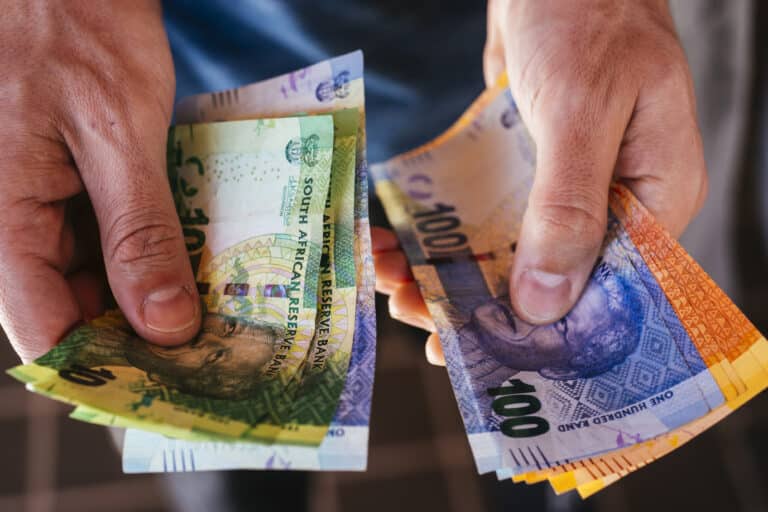South Africa is globally celebrated for its dramatic landscapes, vibrant culture, and rich history. Alongside its iconic figures like Nelson Mandela and world-renowned wildlife, the nation’s currency, the South African rand (ZAR), plays a critical role in its economy and identity.
Whether you’re traveling to South Africa, sending money to family, or simply curious about the currency, understanding the rand is essential. This guide provides everything you need to know, from the currency’s origins and key facts to practical tips for exchange.
What Is the South African Rand?
The South African rand, abbreviated as ZAR (stemming from the Dutch word Zuid-Afrikaanse Rand), is the official currency of South Africa. The currency uses the symbol R and is subdivided into 100 cents (c).
Quick Facts About the Rand
- ISO Code: ZAR
- Symbol: R
- Subunit: 1 rand = 100 cents
- Issued By: The South African Reserve Bank (SARB)
- Denominations:
- Coins: 10c, 20c, 50c, R1, R2, R5
- Banknotes: R10, R20, R50, R100, R200
The South African Reserve Bank (SARB), established in 1921, is the oldest central bank in Africa. It oversees the design, issuance, and circulation of South African currency through its subsidiary, the South African Bank Note Company (SABN).
Brief History of the South African Rand
The rand was introduced in 1961, the same year South Africa became a republic, marking the transition from its previous currency, the South African pound, to a decimal-based system. Named after the Witwatersrand (a ridge rich with gold deposits), the rand quickly became a symbol of South Africa’s aspiration for economic independence.
Currency Evolution
- Predecessors:
- The Dutch guilder and rix dollar were among the region’s earliest currencies.
- The South African pound was introduced during British rule, remaining in circulation until replaced by the rand.
- Modern Developments:
- Smaller coin denominations, such as the 1/2 cent, have been phased out.
- R500 and R1,000 notes were discontinued to reduce counterfeiting risks.
The SARB continues to update the rand with advanced polymer notes and bold designs to enhance security and durability.
Key Features of South African Currency
The rand is celebrated for its striking banknote designs, paying tribute to South Africa’s natural and cultural heritage.
Coins in Circulation
The coins are divided into three distinct materials and feature South Africa’s national themes.
- Copper-Plated Steel (Red): 1c, 2c, 5c (being phased out but still legal tender).
- Bronze-Plated Steel (Yellow): 10c, 20c, 50c featuring images of native flowers.
- Nickel-Plated Steel (White): R1, R2, R5 spotlighting South Africa’s wildlife, especially antelopes.
Banknotes in Circulation
The Big Five wildlife species, emblematic of South Africa’s natural beauty, dominate the reverse side of all major banknotes.
- R10 (Green): Rhinoceros
- R20 (Brown): Elephant
- R50 (Red): Lion
- R100 (Blue): Cape buffalo
- R200 (Orange): Leopard
Special Edition Notes
- The 2018 Nelson Mandela Centenary Series honors Mandela’s legacy with imagery connected to his life, such as his hometown and his time on Robben Island.
Six Fascinating Facts About the Rand
1. Multiple Languages on Banknotes
South Africa has 11 official languages, and the rand reflects this diversity. Each banknote includes at least three languages, showcasing the nation’s inclusivity. For example, the R200 note includes isiZulu, Sepedi, and English.
2. Legal Tender Across Borders
The rand isn’t just used in South Africa. It’s also accepted in Eswatini, Lesotho, and Namibia as part of the Southern African Common Monetary Area. These countries issue their local currencies (e.g., Namibian dollar, Swazi lilangeni) tied to the rand’s value for seamless trade.
3. Named After the Witwatersrand
The rand owes its name to the Witwatersrand, the ridge that cradled Johannesburg’s gold mining boom.
4. Old Notes Are Still Usable
Unlike in many countries, older South African notes and coins, including those no longer printed, remain legal tender. The SARB is required to exchange these at face value.
5. “Banana Money” During Wartime
During World War II, South Africa saw unique currencies, such as the Japanese-style military yen in other regions (“banana money”) and bonds used as stand-ins for coins.
6. Stability Amid Challenges
Though linked to market volatility at times, economic reforms and resource wealth have kept the rand resilient. Recent reforms focus on countering inflation while securing trade partnerships globally.
Understanding the Rand’s Exchange Rate
The foreign exchange market significantly impacts the rand’s value. Fluctuations arise from South Africa’s trade reliance and political factors. Exchange rates vary based on its performance against currencies like the U.S. dollar (USD), euro (EUR), or British pound (GBP). For travelers or money transfers, keeping an eye on rates ensures better value.
Common Currency Pairs
- 1 USD = ZAR (variable by market conditions).
- 1 GBP = ZAR (often fluctuating with commodity prices).
- 1 ZAR = PHP or INR (rising demand in Asian markets).
Tips for Exchanging South African Currency
If you’re traveling or sending money to South Africa, use these tips to manage the rand effectively.
Exchanging Currency Locally
- Avoid Airports: Exchange counters in airports tend to have less favorable rates.
- Use ATMs: Widely accessible in major cities and reliable for withdrawing rand with competitive exchange rates. Fees may apply for international cards.
Durability of Polymer Notes
The durable polymer ensures notes withstand wear, making them a dependable option for daily use.
Low-Denomination Currency
Carry 50c to R10 coins or smaller bills for informal transactions, like street vendors or taxis.
FAQs About the South African Rand
What is the abbreviation for the South African rand?
The abbreviation is ZAR, derived from the Dutch name Zuid-Afrikaanse Rand.
Where is the rand accepted?
The rand is legal tender in South Africa, Eswatini, Lesotho, and Namibia.
Do older rand banknotes still work?
Yes, older notes remain legal tender and can be exchanged by the South African Reserve Bank.
How does South Africa’s economy impact the rand?
The rand’s value reflects South Africa’s trade dynamics with commodity pricing, political stability, and global demand influencing its exchange rate.
Can I use U.S. dollars in South Africa?
While some luxury hotels or tourist destinations accept USD, the rand is predominantly used for transactions.

